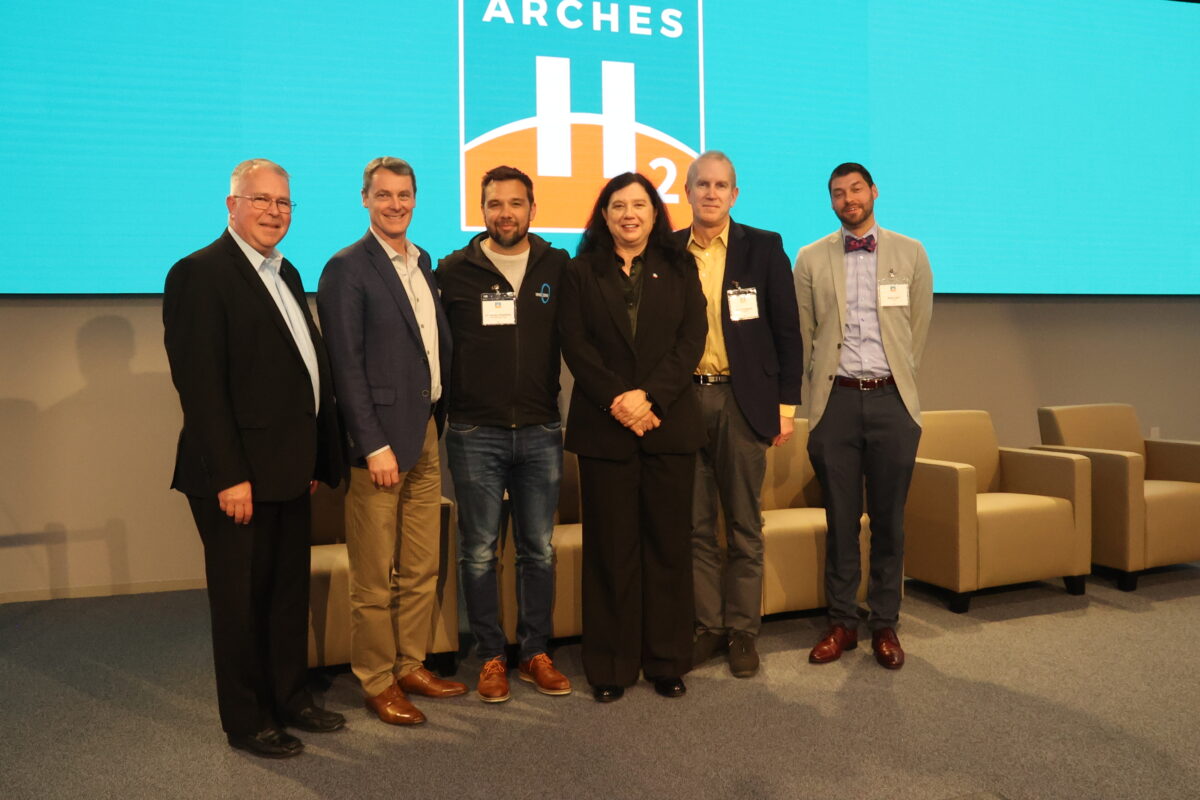ABOUT
Who We Are
ARCHES is a statewide public-private partnership dedicated to advancing the hydrogen economy and clean energy innovation. By bringing together state agencies, industry leaders, academia, labor unions, tribal nations, and organizations, ARCHES accelerates the development of clean hydrogen technologies, essential infrastructure, and sustainable job growth.

ARCHES Principles
Statewide
Leveraging California’s size and diverse geography and economy to produce, transport, store, and use H2 at scale with multiple clusters of each, provides an ideal H2 test-bed for the nation.
Clean
California has long led the nation and the world in innovation and policy and will do so again with clean H2.
Stakeholder and Community-Engaged
Built-in and ensured at all stages of the process.
Aligned with State Interests
To move California toward a robust H2 economy and marketplace, and a cleaner and more sustainable future.
Solution-Oriented
Focused on implementation with targeted research and innovation to achieve the DOE’s $2/kg 5-year goal and the administration’s $1/kg 10-year goal.
Objective and Unbiased
Representing and ensuring the interests of all parties.
Multi-Dimensional
Considering all aspects of a successful H2 economy, including hydrogen producers, offtakers, and transporters like open access pipelines.
Connected
Within California and other H2 hubs.
ARCHES Priorities
Promote hydrogen producers, offtakers, and transportation projects such as open access pipelines.
Prioritize renewable, clean H2.
Focus efforts on regions with the highest current amounts of pollution and airborne toxins.
Invest in the energy system, taking a multi-sectoral approach.
Develop public policy that enables early-markets, while private capital scales them.
Prioritize sectors with biggest emissions profiles, focusing on creating economically sustainable markets.
Create an economically sustainable, expanding, renewable H2 market.
Background: Federal Hydrogen Hub Program
Clean H2[1] from renewable sources offers enormous potential. The Hydrogen Earth Shot Challenge aims to reduce the cost of H2 by 80% within one decade, from the current ~$5 per kilogram (kg) down to $1 per kg. In support of this goal, the Infrastructure Investment and Jobs Act (IIJA)[2] aims to establish a network of regional hubs that will deploy clean H2 technologies at scale.
The IIJA appropriates $8B over 5 or more years to establish at least 4 regional H2 hubs, with a minimum of one focused on renewable sources. The hubs will create a network of clean H2 producers, consumers, and infrastructure to deliver clean H2 at a cost of $2/kg by 2026 and $1/kg by 2031. The federal program will consist of a 3-18 month planning phase and 8-12 year deployment phase, as specified by The US Department of Energy (DOE) Notification of Intent.[3]
ARCHES: A Statewide Partnership for a California Hub
ARCHES is a statewide public-private partnership built on California’s long-standing H2 and renewable energy leadership to serve as the applicant and organizer for a statewide H2 hub.
The State—led by GO-Biz alongside other state agencies, the legislature, local governments, and the State’s institutions of higher education, including UC and two of its affiliated national laboratories—provides vision, leadership, oversight, accountability, and matching funds. Industry partners bring deep technical expertise and capability for building an H2 network in California and significant in-kind matching capacity.
ARCHES includes major deployment clusters in the Los Angeles Basin and Bay Area and extend into the Central Valley, Inland Empire, and other regions (and possibly neighboring states) with high renewable resources, geologic storage possibilities, key transportation corridors, and the need for clean energy and reduced pollution.
Why a California renewable H2 hub is poised to succeed and meet California’s needs
The IIJA requires at least one Hub to produce H2 using renewable resources. California’s extensive renewables portfolio will be essential to power electrolyzers that make clean, renewable H2, decarbonize sectors that are hard to electrify directly, and develop long-duration energy storage solutions.
An H2 hub is an excellent investment of California resources. It will fast-track the development and implementation of H2 infrastructure in California, grow California’s clean energy economy, provide good union careers and job training to California’s workforce, provide R&D funding to develop the technological innovations needed to advance clean H2 technology, and kickstart California’s H2 marketplace, maintaining California’s competitive edge as the new H2 economy emerges.
The H2 economy also presents real opportunities to retain and expand California’s energy workforce, which will build the vast innovative infrastructure needed for H2 production, storage, delivery, and end-use technologies. The conversion (instead of depracation) of significant fossil fuel distribution infrastructure will reduce the need for imported fossil fuels while also allowing for workforce growth, by upskilling current workers and training the workforce leaders of tomorrow.
Endnotes
[1] “Clean hydrogen” is defined in the IIJA as H2 produced with a carbon intensity equal to or less than 2 kilograms of carbon dioxide-equivalent produced at the site of production per kilogram of H2 produced. Federal agencies and stakeholders may re-evaluate this definition over the next 5 years (Sec. 40315 (a)),
[2] https://www.congress.gov/bill/117th-congress/house-bill/3684/text
[3] DOE Notice of Intent to issue Funding Opportunity Announcement No.: DE-FOA-0002779. https://oced-exchange.energy.gov/FileContent.aspx?FileID=72980077-30f7-4c57-b1e2-7b0bf8e52697

